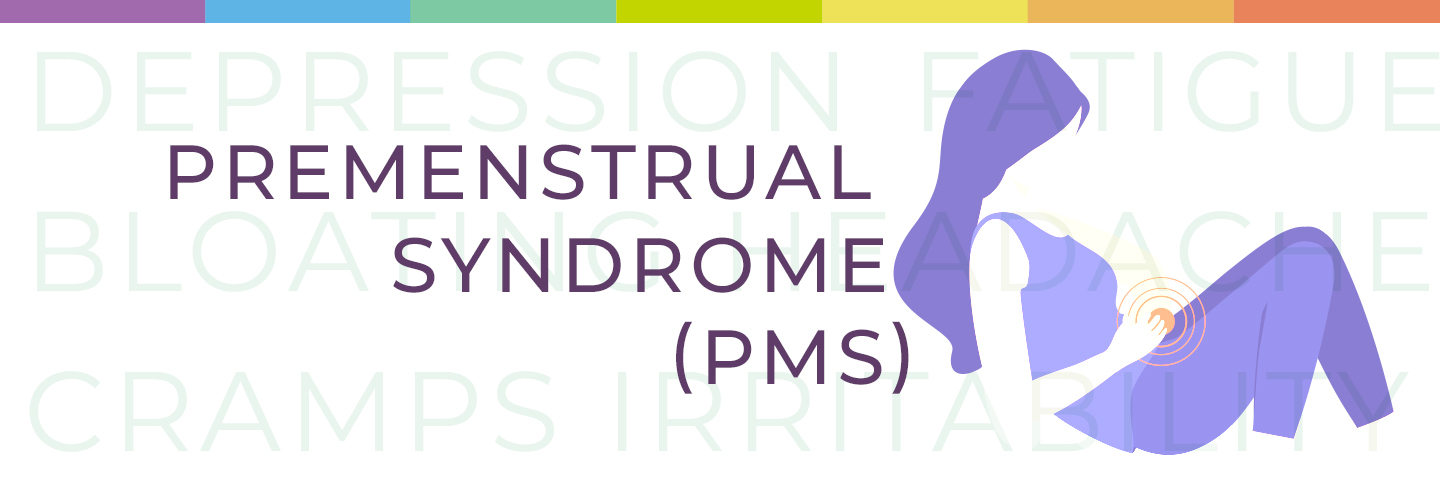
Headache? Bloating? Cramps? We see you, girl.
In honor of Women’s Health Week, we’re talking about your menstrual cycle – the good, bad, and the ugly. Premenstrual syndrome (PMS) affects an estimated 75% of women. PMS can get in the way of our everyday lives as women. The telltale signs of PMS are no secret – cramps, bloating, headache – the usual indicators that your body is doing its monthly checkup. But many women may also experience emotional symptoms. Psychological discomfort due to PMS might include irritability; a depressed or anxious mood; fatigue or poor concentration; and even trouble sleeping. And popping an ibuprofen might not always provide relief! Below, we’ve listed six ways to help reduce PMS that aren’t just Pamprin and dark chocolate.
1. Aerobic exercise
Aerobic exercise – i.e. cardio – essentially trains your cardiovascular system to increase the oxygen it sends to your muscles during times of stress. Some examples of lower-impact aerobic exercise include swimming, biking, elliptical machines, and walking. Higher impact aerobic training includes running or high intensity interval training (HIIT).
Getting enough aerobic exercise in your lifestyle has been scientifically proven to reduce PMS symptoms in the long-term. Consider incorporating higher-impact training throughout your workout routine, and switch to lower-impact exercises during your menstrual cycle to avoid overexertion.
2. Limit stress
Stress is the new silent killer in our modern-day society, and it shows no mercy when it comes to women’s health. Stress and increased cortisol levels – the hormones responsible for stress – can significantly increase women’s risk for both emotional and physical discomfort due to PMS.
On the flip side, lowering your cortisol levels can dramatically reduce your risk for PMS according to a study done by the Journal of Women’s Health. Practices like getting regular sleep, mindfulness habits, and journaling can all help reduce everyday stress – and, hopefully, PMS. For more ideas on reducing stress, check out this article on the PS blog.
3. Eat smaller meals throughout the day
When you are experiencing PMS, eating large amounts of food at once may exacerbate symptoms. Instead of eating three large meals throughout your day, try eating six smaller meals to reduce feelings of fullness and bloating. By spreading out your calorie intake throughout the day, your blood sugar will be more stable, balancing the hormones responsible for your lady health.
4. Try supplements, specifically calcium
Calcium helps grownups, too! Studies show that taking a calcium supplement is an effective treatment for emotional discomfort during PMS. If you don’t want to take a supplement, try incorporating more calcium-rich foods into your diet – like yogurt or leafy greens – for even more benefits.
Other common supplements known to help with women’s health are B-complex, folate, and vitamin D. If you’re looking for a new multivitamin, check out our Multi+ supplement, formulated with B-complex, vitamin D, and CBD for maximum mood and anti-inflammatory properties.
5. Carb up!
Don’t skip carbs, despite what the internet might tell you. Complex carbohydrates can reduce certain PMS symptoms, including bloating, irritability, and food cravings. But make sure you’re eating the best type of carbs to reduce your risk for PMS: not all carbs are equal.
Complex carbohydrates are different from simple carbs, which are often found in processed or packaged foods. Examples of simple carbs that are generally not as beneficial include packaged desserts, white bread, soda, and processed snacks like potato chips. Instead, reach for complex carbs, like wheat bread, oats, rice, vegetables, fruits, and legumes.
6. Consider herbal remedies
While over-the-counter medicine often helps reduce PMS, many women still experience symptoms after taking pain relievers. During the in-between window of ibuprofen doses, PMS may still cause physical discomfort. Instead of over-doing the Tylenol, try an alternative method of pain relief.
Although not many scientific studies are available on the effects of herbal medicine, many women report symptom relief with the use of certain herbs and oils. Some herbs and essential oils you might want to try include ginger, primrose oil, and St. John’s Wort. However, these products are not regulated by the FDA, and you should always consult a physician with any questions or concerns.
CBD and hemp are currently being studied for chronic pain relief. At PS, our hemp products are designed to support anti-inflammation and therapeutic relief. For more information on CBD as a natural remedy, check out the PS blog. Or shop our oils and supplements as an alternative to traditional medicine.
Happy Women’s Health Week!
Women’s health is an important part of healthcare across the world. But often, women don’t have the resources or education to help themselves at home. Check out this resource hub for more information on women’s healthcare in America. Happy National Women’s Health Week from Physician Selected!
